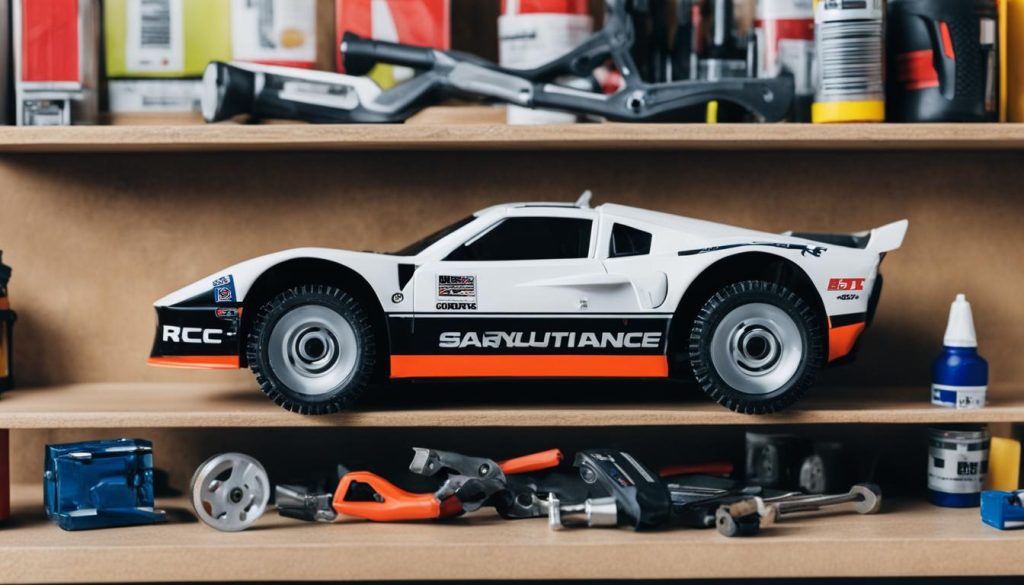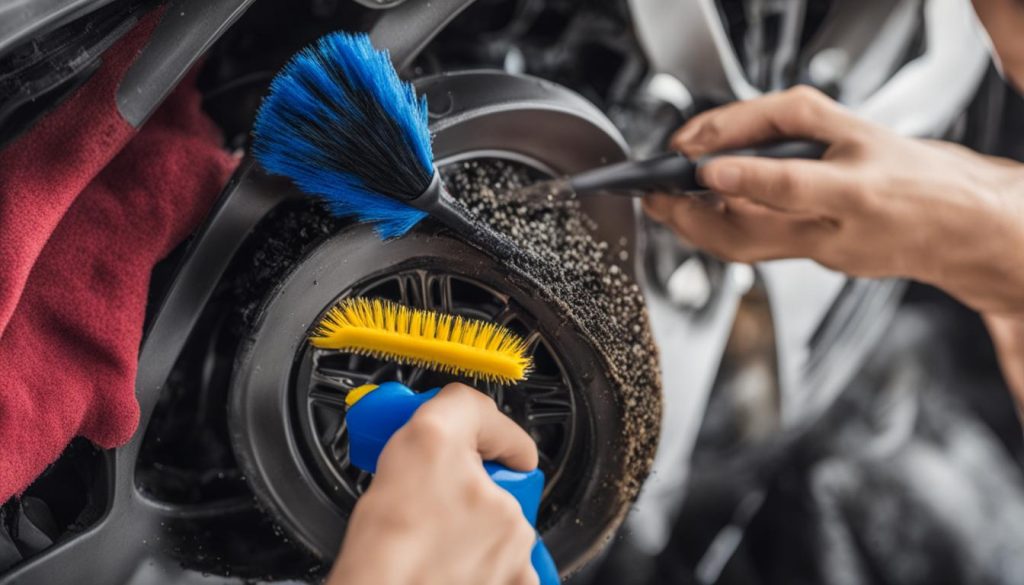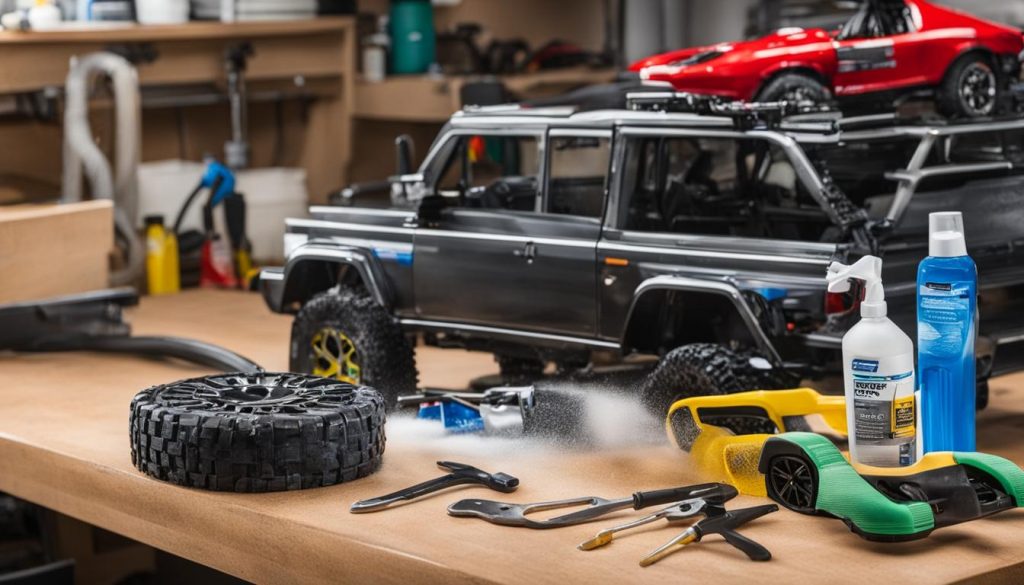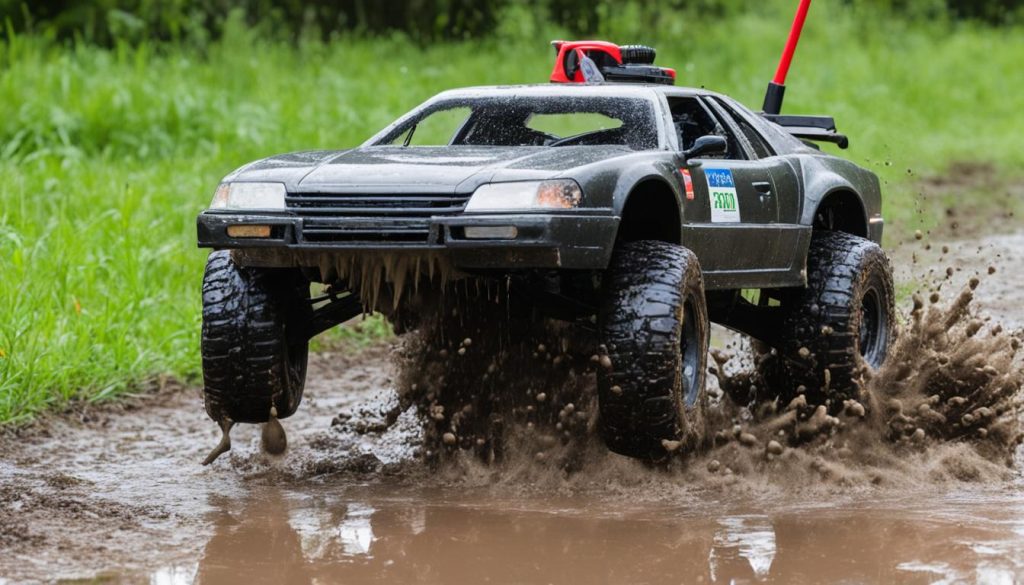If you’re an RC car enthusiast, you’ve probably wondered how long your vehicle should last. The lifespan of an RC car can vary depending on various factors, but with the right maintenance and care, you can maximize its longevity and enjoy years of thrilling racing and off-road adventures.
So, how long should an RC car last? Well, there’s no one-size-fits-all answer. The average lifespan of RC cars can range from a few months to several years, depending on usage, maintenance, and the quality of the car. Cheap and low-quality RC cars may not last as long as their higher-end counterparts, which are built to withstand more demanding conditions.
To help you understand how to make your RC car last longer, let’s dive into some key tips and expectations regarding RC car lifespan and maintenance.
Key Takeaways:
- Proper maintenance and care can significantly extend the lifespan of your RC car.
- The average lifespan of an RC car can vary based on usage, maintenance, and the quality of the car itself.
- High-quality RC cars tend to last longer than cheaper, low-quality options.
- Regularly inspect and clean your RC car to keep it in optimal condition.
- Consider investing in upgrades and replacement parts to improve the durability and performance of your RC car.
- Follow manufacturer guidelines for battery maintenance and charging to ensure longevity.
- Choose the right terrain and driving style to minimize wear and tear on your RC car.
Understanding Battery Specifications for Extended Runtime
When it comes to maximizing the runtime of your RC car, understanding the battery specifications is crucial. Two essential factors that significantly impact the battery’s performance are voltage and capacity.
The voltage of an RC car battery determines its top speed. Higher voltage translates to increased speed, providing an exhilarating experience on the track. On the other hand, greater capacity leads to a longer runtime, allowing you to enjoy extended driving sessions without frequent battery changes.
Let’s delve into more detail regarding the charge:run ratio (CRR). This ratio helps determine the optimal battery setup for an extended running time. By calculating the CRR, you can find the balance between battery charge and runtime, ensuring you don’t run out of power midway through your exhilarating race.
For example, let’s consider the popular Traxxas Slash RC car. Upgrading the stock 3000mAh Nickel-Metal Hydride (NiMH) battery to a more powerful 5000mAh NiMH battery can increase the runtime by approximately 67%. This boost in capacity allows for longer races and more fun on the track.
However, if you’re looking for even greater efficiency, consider switching to Lithium Polymer (LiPo) batteries. LiPo batteries offer increased energy density and efficiency compared to NiMH batteries, allowing you to double the runtime for the same capacity.
To help you visualize the impact of battery upgrades on runtime, take a look at the table below:
| Battery Type | Capacity | Runtime Increase |
|---|---|---|
| NiMH (Stock Battery) | 3000mAh | N/A |
| NiMH (Upgraded Battery) | 5000mAh | 67% |
| LiPo (Upgraded Battery) | 5000mAh | 100% |
Note that these numbers are approximate and can vary based on various factors such as driving conditions, terrain, and throttle control. However, they demonstrate the significant impact that battery upgrades can have on the overall runtime of your RC car.
By understanding the battery specifications and making informed choices, you can enjoy extended running times and maximize the fun and excitement of your RC car adventures.
Increasing RC Car Lifespan with Battery Upgrades
Upgrading the battery of your RC car is an effective way to increase its lifespan and enhance performance. By choosing a larger capacity battery and employing parallel connection techniques, you can significantly improve the total capacity and runtime of your vehicle.
Let’s take an example to illustrate the benefits of battery upgrades. Imagine you have a 6.4V 350mAh battery in your RC car, but you want to extend its working time. By adding a 6.4V 1600mAh LiFePO4 battery in parallel, the total capacity of your RC car battery will increase to 1950mAh, resulting in a fivefold increase in runtime.
However, it’s important to note that as the capacity of the battery increases, the charging time will also increase proportionally. To optimize the charge:run ratio and reduce charging time, it’s crucial to choose the right charger.
Consider investing in a high-quality charger like the Traxxas Ez-Peak+ or Traxxas Ez-Peak Live charger. These chargers are designed specifically for RC car batteries and offer efficient and fast charging capabilities. With the right charger, you can minimize the downtime between sessions and spend more time enjoying the thrill of driving your RC car.
To summarize, upgrading your RC car battery and utilizing parallel connection techniques can significantly extend your vehicle’s lifespan. By increasing the total capacity and choosing the right charger, you can enhance runtime and reduce charging time. Invest in quality components and accessories to ensure optimal performance and longevity for your RC car.
Benefits of Battery Upgrades
| RC Car Battery Upgrade | Increased Capacity | Extended Runtime | Charging Time | Optimized Performance |
|---|---|---|---|---|
| Original Battery | 350mAh | Approx. X min | Approx. Y min | Standard Performance |
| Battery Upgrade | 1950mAh | Approx. 5X min | Approx. Z min | Enhanced Performance |
The Influence of Charging Cycles on RC Car Lifespan
The lifespan of an RC car battery is influenced by the number of charging cycles it undergoes, rather than the specific number of times it is charged. Deep charging and discharging significantly impact the lifespan of Ni batteries, while light charging and discharging benefit LiPo batteries.
When it comes to Ni batteries, such as Nickel-Metal Hydride (NiMH) batteries, it is important to avoid deep discharging, as it can shorten their lifespan. Ni batteries perform best when charged before they are completely depleted. On the other hand, LiPo batteries, or Lithium Polymer batteries, benefit from light charging and discharging, which helps maintain their overall longevity.
Power consumption throughout the battery’s lifespan plays a crucial role in determining its overall durability. Ni batteries tend to have a higher power consumption compared to LiPo batteries. Therefore, it is important to consider power consumption when selecting the appropriate battery for your RC car.
Operating the RC car within the regulated temperature range is also vital in maintaining optimal battery performance. Extreme temperatures, both hot and cold, can negatively impact the battery’s capacity and decrease its lifespan.
To summarize:
- Deep charging and discharging negatively affect Ni batteries, while light charging and discharging benefit LiPo batteries.
- Regulated temperature plays a crucial role in maintaining optimal battery performance.
- Power consumption throughout the battery’s lifespan determines its overall durability.
By understanding the influence of charging cycles, battery types, regulated temperature, and power consumption, you can maximize the lifespan of your RC car’s battery and enjoy extended hours of thrilling racing.
| Battery Type | Charging and Discharging | Power Consumption |
|---|---|---|
| Ni batteries (NiMH) | Deep charging and discharging negatively impacts lifespan | Higher power consumption |
| LiPo batteries | Light charging and discharging benefits lifespan | Lower power consumption |
Factors Affecting RC Car Lifespan: The Three Ts
Terrain, temperature, and temperament are the three major factors that can impact the lifespan of an RC car.
The type of terrain the vehicle is driven on plays a significant role in its overall longevity. Different terrains, such as pavement, grass, or dirt, have varying levels of energy consumption. For example, driving on grass, mud, or sand increases friction, leading to higher energy consumption and shorter runtimes. On the other hand, driving on pavement, dirt, or gravel provides minimal resistance, optimizing battery runtime. It is important to consider the terrain you’ll be driving on to prolong the lifespan of your RC car’s battery.
Extreme temperatures, whether hot or cold, can have a detrimental effect on the performance of the RC car’s battery. In hot weather, the battery may experience power depletion, resulting in decreased runtime. Similarly, cold weather reduces battery efficiency, leading to shorter runtimes and potential difficulties in charging. Therefore, maintaining suitable temperature conditions is crucial for optimum battery performance and longevity.
Lastly, the user’s driving style and throttle control greatly influence the lifespan of the RC car. Smooth and controlled acceleration is key to preserving the battery and maximizing working time. Abrupt and excessive acceleration can waste energy and contribute to wear and tear on the vehicle. By practicing efficient throttle control and employing gentle acceleration, you can extend the lifespan of your RC car.
| Terrain | Impact on Battery Lifespan |
|---|---|
| Pavement, dirt, gravel | Minimal energy consumption, extended runtime |
| Grass, mud, sand | Increased energy consumption, shorter runtime |
Driving your RC car on suitable terrain, maintaining optimal temperature conditions, and employing smooth throttle control are key factors in prolonging the lifespan of your RC car’s battery. By considering these three Ts, you can ensure that your RC car lasts for years to come.
Gear Ratio and Its Impact on Battery Life
The gear ratio of an RC car plays a crucial role in determining the strain on various components, including the motor, speed control, and battery. Understanding how gear ratio affects battery life is essential for optimizing RC car performance and extending the lifespan of your battery.
A higher gear ratio, such as 2.0:1, puts less strain on the motor, speed control, and battery. This results in increased battery life, allowing you to enjoy longer running times before needing to recharge. By reducing the strain on these components, you can minimize wear and tear, ultimately prolonging the overall lifespan of your RC car.
However, it is vital to find a balance between gear ratio, runtime, and top speed. While higher gear ratios may enhance battery life, they can sacrifice top speed. On the other hand, lower gear ratios may provide greater acceleration and top speed but can strain the battery and reduce its lifespan.
To achieve the optimal balance between performance and battery life, adjustments to the gear ratio should be made incrementally. Start with a moderate gear ratio and observe the impact on top speed, acceleration, and battery strain. Gradually fine-tune the gear ratio until you find the sweet spot that maximizes both performance and battery longevity.
Remember, the goal is not only to extend battery life but also to optimize RC car performance. Take into account your terrain, driving style, and desired level of speed and acceleration when determining the ideal gear ratio for your RC car.
Benefits of Optimal Gear Ratio:
- Increased battery life
- Reduced strain on motor, speed control, and battery
- Minimized wear and tear
- Improved overall RC car performance
Factors to Consider When Adjusting Gear Ratio:
- Terrain: Different terrains require different gear ratios for optimal performance and battery life.
- Speed Control: Consider the capabilities of your speed control system and adjust the gear ratio accordingly.
- Battery Strain: Monitor the battery’s temperature and performance to avoid excessive strain.
- Top Speed: Find the right balance between top speed and battery longevity to achieve optimal performance.
- RC Car Performance: Evaluate how adjustments to the gear ratio impact the overall performance of your RC car.
“By optimizing the gear ratio, you can extend battery life, enhance RC car performance, and enjoy prolonged running times.”
Keep in mind that every RC car is unique, and finding the perfect gear ratio may require some experimentation. Don’t be afraid to test different gear ratios and evaluate their impact on battery life and overall performance. With a bit of patience and fine-tuning, you can achieve the optimal gear ratio that maximizes the lifespan of your battery while delivering exciting RC car performance.
Image: Gear Ratio and Its Impact on Battery Life
Extending RC Car Lifespan Through Proper Throttle Control
Efficient throttle control is essential for maximizing the lifespan of your RC car. By implementing proper throttle techniques, you can enhance energy efficiency, minimize wear and tear on the vehicle, and optimize RC car performance.
One of the key strategies for throttle control is to avoid abrupt and excessive acceleration. Sudden bursts of speed not only waste energy but also put unnecessary strain on the motor and other components of the RC car. Instead, focus on utilizing incremental throttle inputs and maintaining smooth acceleration to ensure efficient energy usage and prolong the overall runtime of your RC car.
“Controlling the throttle of your RC car is like mastering an art. It’s all about balance and finesse.”
Learning efficient driving techniques, such as gradually increasing the throttle when starting or cornering, allows for better control and reduces the strain on the vehicle. By being mindful of throttle inputs and avoiding aggressive acceleration, you can extend the lifespan of your RC car and minimize the need for frequent repairs or part replacements.
Optimizing throttle control not only benefits the energy efficiency and longevity of your RC car but also enhances the overall performance. The smoother acceleration enables better handling, precise maneuverability, and improved traction, allowing you to fully enjoy the capabilities of your RC car.
| Throttle Control Tips for Extending RC Car Lifespan |
|---|
| 1. Gradually increase throttle when starting and cornering. |
| 2. Avoid abrupt and excessive acceleration. |
| 3. Maintain consistent and smooth throttle inputs. |
| 4. Practice efficient driving techniques to reduce wear and tear on the vehicle. |
| 5. Optimize throttle control for better overall RC car performance. |
By mastering throttle control and employing efficient driving techniques, you can significantly extend the lifespan of your RC car, enhance energy efficiency, and minimize the need for costly repairs. Take the time to practice and refine your throttle control skills, and you’ll enjoy prolonged enjoyment and performance from your RC car.
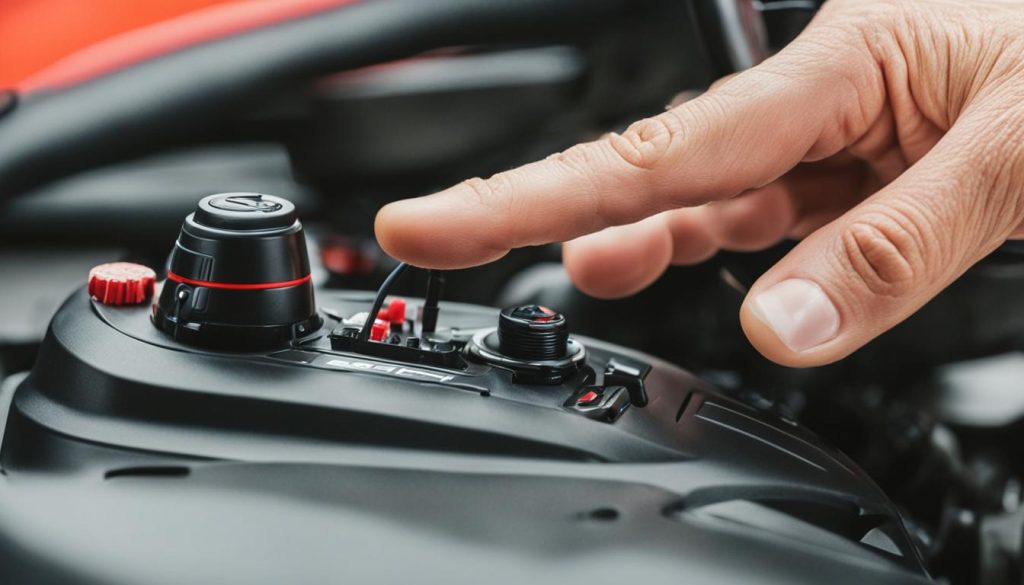
Battery Performance in Various Temperatures
Battery performance is a crucial aspect of maximizing the lifespan of your RC car. However, extreme temperatures can have a significant impact on the efficiency and overall performance of the battery. When it comes to temperature, both cold weather and hot weather present their own challenges and considerations.
Cold Weather
In colder temperatures, battery efficiency tends to decrease. The cold weather slows down the chemical reactions inside the battery, leading to reduced energy output. As a result, you may experience shorter runtimes and difficulties in charging your RC car’s battery.
In extremely cold conditions, you may encounter issues with the battery not delivering sufficient power to the motor, causing a decrease in overall performance. It is essential to keep this in mind when operating your RC car during winter or cold weather conditions.
Hot Weather
On the other hand, hot weather can also have adverse effects on battery performance. High temperatures can accelerate the depletion of power stored in the battery, leading to shorter runtimes and diminished overall performance.
Furthermore, excessive heat can affect the battery’s ability to charge properly. Charging difficulties may arise, and the battery might not reach its full potential capacity. It is crucial to stay mindful of the operating temperature range specified by the manufacturer and avoid subjecting your RC car to extreme heat.
| Temperature | Effect on Battery Performance |
|---|---|
| Cold Weather | Reduces battery efficiency, shorter runtimes, charging difficulties |
| Hot Weather | Accelerates power depletion, shorter runtimes, charging difficulties |
Optimizing battery performance in various temperatures requires careful consideration and taking appropriate measures to minimize any potential damage or negative impacts. Storing your RC car and its batteries in a temperature-controlled environment when not in use can help maintain optimal performance.
Remember, ensuring the battery is within the recommended temperature range is crucial for its longevity and overall performance.
By understanding and accounting for the impact of temperature on battery performance, you can make informed decisions about when and where to operate your RC car. This knowledge allows you to take necessary precautions and ensure your battery operates optimally, leading to extended runtimes and overall improved performance.
The Role of Terrain in RC Car Lifespan
The type of terrain on which an RC car is driven plays a significant role in its energy consumption and overall battery runtime. Different terrains impact the car’s resistance and can either extend or shorten its battery life.
When driving on smooth surfaces like pavement, dirt, or gravel, RC cars experience minimal resistance. These terrains provide optimal conditions for extended runtime, as the car can easily glide over the surface with minimal energy consumption.
On the other hand, driving on grass, mud, or sand increases energy consumption due to the added friction. The car’s tires have to work harder to navigate through these terrains, resulting in shorter runtimes. The resistance caused by these terrains puts a strain on the RC car’s battery, leading to faster energy depletion.
To maximize the lifespan of your RC car’s battery, it’s important to choose suitable terrains for driving. Opt for smooth surfaces like pavement, dirt, or gravel to minimize resistance and maximize runtime. Avoid driving on grass, mud, or sand for prolonged periods as they can significantly impact the battery’s lifespan.
Remember: The type of terrain you choose can greatly influence the energy consumption of your RC car and ultimately determine the longevity of its battery.
Now let’s take a closer look at how different terrains impact energy consumption and battery runtime:
| Terrain | Resistance | Energy Consumption | Battery Runtime |
|---|---|---|---|
| Pavement | Minimal | Low | Extended |
| Dirt | Minimal | Low | Extended |
| Grass | High | High | Shortened |
| Mud | High | High | Shortened |
| Sand | High | High | Shortened |
| Gravel | Minimal | Low | Extended |
As you can see from the table above, choosing the right terrain can have a significant impact on the battery runtime of your RC car. Opting for terrains with minimal resistance, such as pavement, dirt, or gravel, can help extend the lifespan of your RC car’s battery and provide longer playtime.

The Impact of Gearing on RC Car Battery Life
In the world of RC cars, gearing plays a crucial role in determining not only the motor RPM and top speed but also the strain on the battery and overall energy efficiency. By understanding the relationship between gearing, battery life, and performance, you can make informed decisions to maximize your RC car’s runtime.
When it comes to gearing, higher gear ratios can reduce the RPM of an RC car’s tires. This reduction in RPM results in less strain on the battery, allowing it to operate at a lower power output and maximizing its lifespan. As a result, you can enjoy extended runtime and more hours of thrilling RC action.
However, it’s important to strike the right balance between gear ratio, top speed, and energy efficiency. While higher gear ratios may increase battery life, they can also sacrifice some top speed. Conversely, lower gear ratios can provide higher top speeds but can strain the battery, potentially reducing its lifespan.
Therefore, it’s essential to consider your priorities and the specific requirements of your RC car when choosing the gear ratio. If you prioritize longer runtime and battery longevity, opting for a higher gear ratio is a sensible choice. On the other hand, if achieving maximum speed is your goal, you may need to compromise on battery life.
To help you visualize the impact of different gear ratios on battery life, consider the following example:
| Gear Ratio | Battery Strain | Top Speed | Energy Efficiency |
|---|---|---|---|
| High Gear Ratio | Reduced | Decreased | Increased |
| Low Gear Ratio | Increased | Increased | Decreased |
As you can see, a higher gear ratio leads to reduced battery strain, lower top speeds, and increased energy efficiency. Conversely, a lower gear ratio increases battery strain, improves top speeds, but decreases overall energy efficiency.
Remember, finding the optimal gear ratio for your RC car may involve some trial and error. It’s crucial to experiment and monitor the performance of your car to strike the right balance. By doing so, you can ensure both optimal battery life and a thrilling RC experience.
Conclusion
In summary, maximizing the lifespan of your RC car requires a combination of understanding battery specifications, implementing proper maintenance techniques, and considering various factors that impact battery life. By choosing the right battery and optimizing gear ratios, you can extend the battery’s lifespan and enjoy longer runtimes. Additionally, practicing efficient throttle control and considering terrain, temperature, and driving style can further enhance the longevity of your RC car and its battery.
It is essential to prioritize battery maintenance by properly charging and storing your batteries and regularly assessing their performance. This ensures optimal functionality and prolongs the lifespan of your RC car. By following these tips and guidelines, you can maximize the lifespan of your RC car and enjoy consistent and optimal performance for years to come.
Remember, a well-maintained battery is the key to achieving optimal performance and getting the most out of your RC car. So take care of your batteries, consider the various factors that influence RC car lifespan, and implement the necessary steps to ensure their longevity. With proper battery maintenance and attention to optimal performance factors, you can enjoy countless hours of fun and excitement with your RC car.
FAQ
How long should an RC car last?
The lifespan of an RC car can vary depending on various factors such as use, maintenance, and the quality of the components. With proper care and maintenance, an RC car can last for several years.
What is the average lifespan of RC cars?
The average lifespan of RC cars can range from 2 to 10 years, depending on the brand, model, and usage. Higher-end RC cars that are built with durable materials and undergo regular maintenance tend to have a longer lifespan.
How can I increase the lifespan of my RC car?
To prolong the lifespan of your RC car, you can follow these tips: 1) Use a larger capacity battery for extended runtime, 2) Upgrade the battery to a higher performance one, 3) Charge and discharge your battery properly, 4) Drive on suitable terrain, 5) Maintain the recommended temperature range, 6) Adjust the gear ratio to reduce strain on the battery, and 7) Practice efficient throttle control to minimize energy waste and wear and tear.
What maintenance tips can help prolong the lifespan of my RC car?
To keep your RC car in good condition and extend its lifespan, you can perform the following maintenance tips: 1) Regularly clean the car, 2) Check and tighten the screws, 3) Lubricate moving parts, 4) Inspect the tires for wear, 5) Clean and maintain the battery, 6) Check the motor and electronics for any abnormalities, and 7) Store the RC car in a cool, dry place when not in use.
What factors impact the lifespan of an RC car?
Several factors can influence the lifespan of an RC car, including: 1) The quality of the components used, 2) The frequency and intensity of use, 3) The maintenance and care given to the vehicle, 4) The terrain on which it is driven, 5) The temperature conditions it is exposed to, and 6) The user’s driving style and throttle control.
How does the gear ratio affect the lifespan of an RC car?
The gear ratio of an RC car determines the strain on its motor, speed control, and battery. A higher gear ratio puts less strain on these components, resulting in increased battery life. However, finding the optimal balance between gear ratio, runtime, and top speed is crucial to ensure optimal performance and battery life.
Can extreme temperatures affect the lifespan of an RC car?
Yes, extreme temperatures can impact the performance and lifespan of an RC car. Cold weather reduces battery efficiency and can lead to shorter runtimes and difficulties in charging, while high temperatures can cause power depletion and affect the battery’s ability to charge. It is important to consider temperature conditions for optimum battery performance and to avoid any potential damage to the battery.
How does terrain impact the lifespan of an RC car?
The type of terrain on which an RC car is driven affects its energy consumption and, consequently, influences the battery’s runtime. Driving on surfaces like pavement, dirt, and gravel, which offer minimal resistance, provides optimal conditions for extended runtime. In contrast, driving on grass, mud, and sand increases energy consumption due to added friction, resulting in shorter runtimes.
What is the role of throttle control in extending the lifespan of an RC car?
Efficient throttle control plays a critical role in extending the lifespan of an RC car. Avoiding abrupt and excessive acceleration reduces energy waste and minimizes wear and tear on the vehicle. Learning to utilize incremental throttle inputs and maintaining smooth acceleration can significantly increase the overall runtime of the RC car.
How does the charging cycle impact the lifespan of an RC car battery?
The lifespan of an RC car battery is affected by the number of charging cycles it undergoes, rather than the specific number of times it is charged. Deep charging and discharging significantly impact the lifespan of Nickel-Metal Hydride (NiMH) batteries, while light charging and discharging benefit Lithium Polymer (LiPo) batteries. The overall power consumption throughout the battery’s lifespan is what ultimately determines its longevity.
What battery upgrades can help increase the lifespan of an RC car?
Upgrading the battery of an RC car can significantly increase its lifespan. By adding a larger capacity battery and using parallel connections, the total capacity and runtime can be increased. Additionally, choosing a high-performance battery, such as a LiPo battery, can provide increased efficiency and longer runtimes compared to NiMH batteries.

